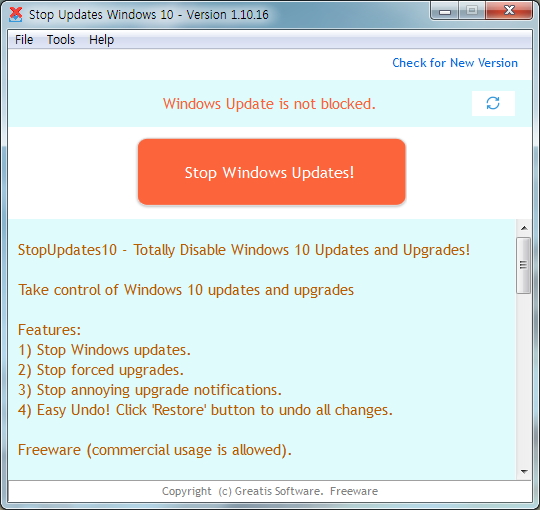

You may restore updating functionality at any time by selecting the "restore Windows Updates" option that the program comes with.

It returns an error when you do so after you block updates. You can verify this by opening Windows Updates in the Settings app and clicking on the "check for updates" button. The application checks the current status of the system on launch and displays either the "stop Windows Updates" or "Restore Windows Updates" button in the interface based on that initial test.Ī click on the stop Windows Updates button writes data to the Registry that blocks updating functionality. StopUpdates10 creates Registry keys that are created when you set update related policies to block Windows updates on the device the application is run on. You may use the Settings app, Group Policy, or Registry for that. Windows 10 comes with options to delay the installation of updates. Note: Microsoft changed the update scheme to rollup updates on Windows 7 and Windows 8 systems in 2016 as well (and Server variants).

The only option users and administrators have is to block all updates temporarily until issues are resolved.ĭoing so is far from ideal as you may block important security updates when you block updates. The new cumulative nature of updates introduced an all or nothing approach to updates it is no longer possible to block specific updates with issues. While it is usually not a good idea to block the installation of updates, as you'd block non-critical and security updates alike, doing so may sometimes be necessary as a temporary measure.


 0 kommentar(er)
0 kommentar(er)
